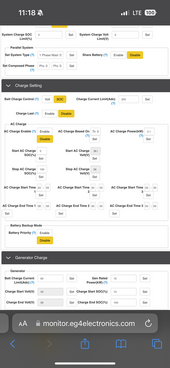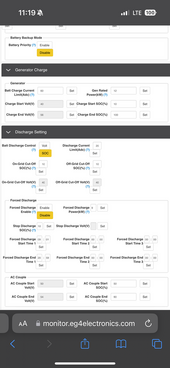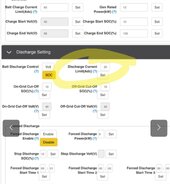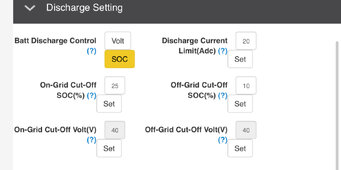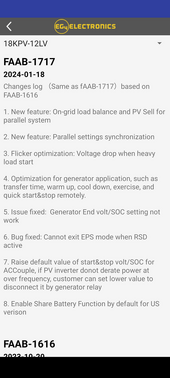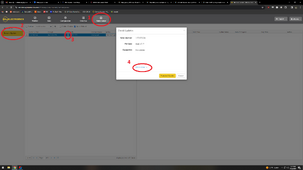Zapper77
Renaissance Man
- Joined
- Jul 23, 2022
- Messages
- 2,344
Please share your settings. Use https://monitor.eg4electronics.com/WManage/web/loginIs someone able to help with a battery discharging issue? When there is no longer solar input my batteries will start discharging before the grid, which is exactly what I want, however the batteries only discharge down to 20% then the grid kicks in and starts charging the batteries at 500 watts. I have On-Grid cut off at 10% and AC Charge disabled.(I have enabled AC Charge at 100w to limit the random 500 watts going into the battery) How do I make it so the batteries discharge to 10% and the grid doesn’t charge the batteries unless AC Charge is on.
Need to see
Charge
Discharge
Force Discharge
Peak Shaving




